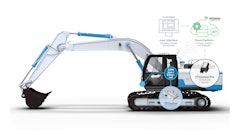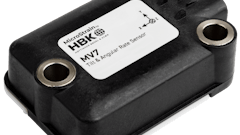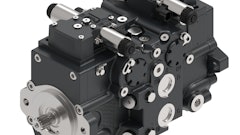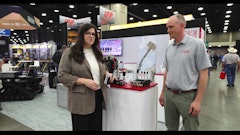The year 1966 was when the Soviet's Luna 9 made the first rocket-assisted landing on the moon, the Cultural Revolution began in China and the Rolling Stones were banned from 14 New York hotels. With so much going on it may have been easy for the general public to overlook the launch of the DR631, generally considered the birth of the articulated dump truck. Essentially the merger of an Volvo farm tractor and a trailer, they were permanently joined via an articulating hitch with the front axle of the tractor removed. Nicknamed Gravel Charlie, it had a 10-ton payload and set the stage for greater things to come. Its popularity grew slowly, however, with sales in the early years being confined to its home market in Sweden.
The articulated hauler concept is celebrating its 40th anniversary this year, marking four decades of transporting earth, gravel and a host of other materials over rough, slippery, steep or otherwise impassable terrain. The company that commercially launched the concept in 1966 – Volvo Construction Equipment (Volvo CE) — will this year see the 50,000th unit roll off its production line. The 50,000th Volvo articulated hauler has been painted in distinctive Volvo blue and was displayed at Intermat in Paris.
Volvo's haulers have been in consistent development since they were launched. One year after the trucks introduction, Volvo introduced the DR860, the first articulated hauler with a bogie, meaning that the material in the load body remains level and stable (reducing spillage) while the wheels cope with uneven road surfaces.
The first hauler with a turbo-charged engine — the DR860T — arrived in 1970, and in 1979 things started to speed up, with the launch of the 5350. Capable of 50 km/h, the "Off-road Express" was able to maintain previously unheard of speeds thanks to a suspended front axle and an automatic transmission. Traction was further increased with the addition of a six-wheel drive system.
The A20 was launched in 1986 with a 200-hp engine and a 20-ton payload. Things got bigger in 1987 with the advent of the 35-ton A35, which also featured a retarder built into the transmission to reduce wear on the service brakes.
The product range was given a major overhaul in 1993 with the introduction of the C-Series, which featured a low-emission engine, fully automatic transmission and 100% differential locks. The 40-ton class hauler was launched in the mid 1990s in the shape of the A40, pulled along by a 400 hp engine and stopped by oil cooled wet disc brakes.
Volvo CE's D Series of articulated haulers — bigger, stronger, tougher, more reliable, easier to operate, safer for the environment and the operator — was introduced in 2000. The haulers — models A25D, A25D 4x4, A30D, A35D and A40D — cover payload ranges of 24 to 37 tons. With an award winning design (the Red Dot industrial design award) and a comfortable cabin, the operator gets a low-fatigue work environment, as do the service engineers, with no daily and minimal weekly greasing needed. Diagnostic electronics also alert both operator and technician of problems before they become failures; thus increasing uptime.
Recent developments include Automatic Traction Control (ATC) — an option on the A25D and A30D — relieves the operator from manually operating differential locks and drive configurations (6X4 or 6X6) as driving conditions change. Multiple sensors constantly check the speed differences within the driveline and select the best drive combination for the conditions. This also reduces tire wear, driveline stress and fuel consumption.















![Sa P75 I Sahr[80]](https://img.oemoffhighway.com/mindful/acbm/workspaces/default/uploads/2025/10/sa-p75-isahr80.Cn3n79HB4H.jpg?ar=16%3A9&auto=format%2Ccompress&fit=crop&h=135&q=70&w=240)